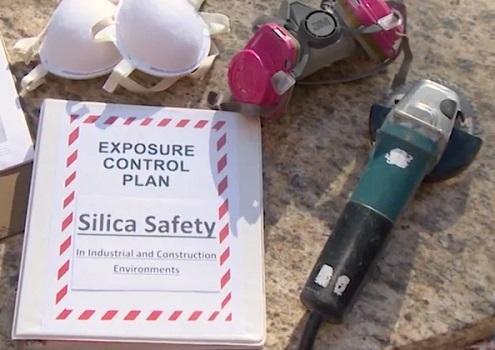Silica, also known as quartz, is a common mineral found in sand, rock, and soil. It is widely used in various industrial and construction products, including concrete, brick, and glass. While silica is a useful and abundant resource, it can also be a hazard if inhaled in the form of dust.
Breathing in silica dust can cause a serious lung disease called silicosis, which can lead to difficulty breathing, chest pain, and an increased risk of lung infections. In severe cases, silicosis can be fatal. To help businesses keep their employees safe on the job, here are some tips for managing silica safety in industrial and construction environments:
- Use engineering controls: Engineering controls can reduce or eliminate the risk of exposure to silica dust. Examples of engineering controls include ventilation systems, water sprays, and enclosing processes that generate dust.
- Use personal protective equipment (PPE): Personal Protective Equipment, such as respirators, can help reduce the risk of inhaling silica dust. Make sure your workers have the appropriate PPE for the job and are trained on how to use it properly.
- Implement a respiratory protection program: A respiratory protection program can help ensure that workers have the appropriate respiratory protection for the job and are properly trained on how to use it. This may include fit testing, medical evaluations, and training on the proper use and care of respiratory protection.
- Monitor air quality: Regularly monitor air quality to ensure that it meets safety standards and that workers are not exposed to harmful levels of silica dust.
- Follow proper cleanup procedures: When cleaning up areas where silica dust may be present, follow proper procedures to minimize the risk of exposure. This may include wetting down surfaces and using vacuum systems with high-efficiency particulate air (HEPA) filters.
- Use wet methods: When possible, use wet methods to control silica dust. This may involve using water to suppress dust when drilling, sawing, or grinding materials that contain silica.
- Post warning signs: Post warning signs in areas where silica dust may be present to alert workers to the potential hazard. These signs should include information on the potential health effects of silica dust and how to protect themselves.
- Train workers on silica hazards: Make sure your workers are trained on the hazards of silica dust and how to protect themselves. This may include information on the symptoms of silicosis and what to do if they believe they have been exposed to silica dust.
- Follow OSHA guidelines: The Occupational Safety and Health Administration (OSHA) has established guidelines for controlling silica dust in the workplace. Be sure to follow these guidelines to ensure that your workers are protected from the hazards of silica dust.
- Use substitution: Use materials that do not contain silica or have a lower silica content to reduce the risk of exposure. This may involve using alternative materials or dust-control measures to reduce the amount of silica dust generated.
By following these tips and taking the necessary precautions, businesses can help ensure that their employees are safe from the hazards of silica dust in industrial and construction environments. Proper training, PPE, and air monitoring are critical to maintaining a healthy and productive workforce, and they can help businesses avoid costly accidents and injuries.
Do you need Online Construction Safety Training?
Try a free demonstration of Silica Safety in Industrial and Construction Environments










